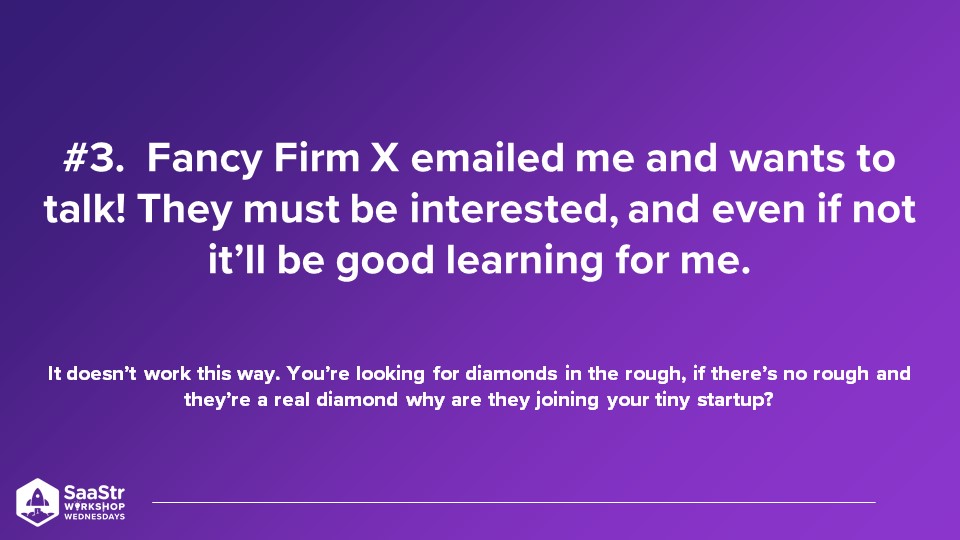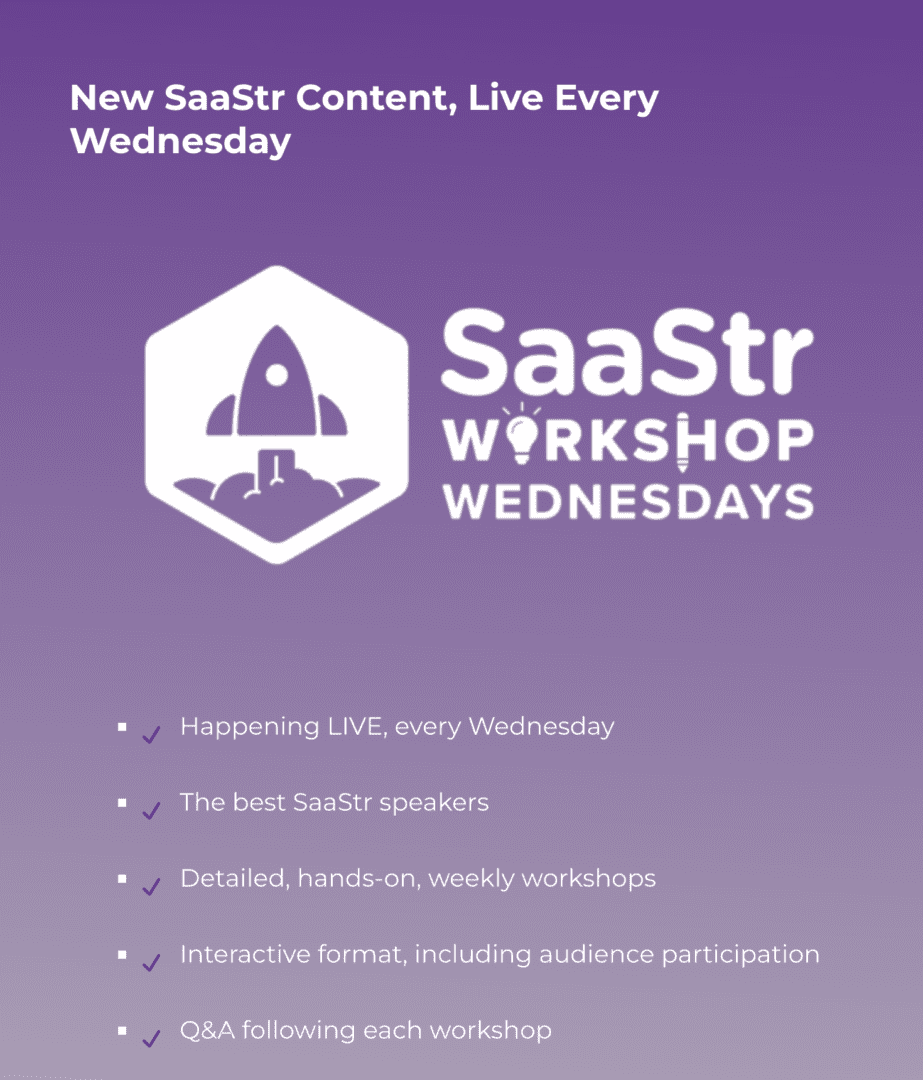At nine figures in revenue and 550 people, the CEO of Lattice, Jack Altman, has seen every stage of building a startup.
In this week’s Workshop Wednesday — held every Wednesday at 10 a.m. PST — Altman talks more in-depth about his viral tweet storm, sharing the eight things you think as a first-time founder that usually aren’t true.
Misconception #1: Good Traction Or Growth Is Just A Couple More Features Away
It rarely works like this. More often than not, if you aren’t getting pull on your product, it’s not because it’s missing that mythical feature that will suddenly make customers want it.
Most of the time, a missing teams view or the ability to integrate with one more system isn’t the answer. People are nice and don’t want to tell a founder or product leader their product isn’t interesting, so they find ways to say it indirectly, which can translate into a missed signal.
Founders so badly want to listen with happy ears and are looking for validation, but Altman believes you should take the opposite view of not believing a word they say until they pay you and sign something.
Don’t burn time and capital trying to make fetch happen. If you can’t start selling design mockups of your next few months of roadmap, cut bait on it and keep looking.
You’ll know when you’ve created something that solves a real need because people will be willing to put their money where their mouth is.

Misconception #2: There Are No “One-Time” Costs
Many founders say, “Well, our burn was $600k this quarter, but actually, it was $450k because we had legal fees, an employee separation, a new office deposit, and a team off-site.”
No. There are always one-time costs, and those one-time costs count towards burn.
Early-stage founders often view the actual costs as the people and everything else as a blip that doesn’t count.
The problem with ignoring one-time costs is you think you’re doing great, but you’re actually running out of money.
Do a burn analysis of the last four months on a rolling basis. Doing it every four months gives you a more accurate and tactical way to talk about it.
Sure, one month might have a one-off expense, but you’ll get a pretty normalized average over four months.

Misconception #3: A Fancy Firm emails you and wants to talk! They must be interested, and even if they aren’t, it’ll be good learning for me.
If Fancy Firm X emails you, it doesn’t mean they’re interested. It means they’re doing their job. Altman agrees with this misconception 95% of the time.
Founders have many jobs: to build a product, get customers, stand up a marketing function, manage a team, manage your burn, fundraise, and get an office space. The fundraising bucket is relatively small in the grand scheme of a founder’s responsibilities.
And if you aren’t ready to fundraise, don’t do it. It’s distracting from the work you should be doing.
For a VC, their entire bucket is hounding you until you talk to them because that’s what sector coverage looks like. It doesn’t mean they want to invest in your company.
How should you interact with VCs reaching out to you?
- Do it on your terms.
Even if it’s casual chit-chat for you, it isn’t for them. Have materials prepared and communicate your business the way you want to communicate because these people will or won’t remember you down the line when you are ready to fundraise based on what you say. - If your business is doing decent, take a one-hour meeting each week.
If you aren’t ready to fundraise, get a little organized on how you talk about your business, and then take a meeting a week. Not everyone has a huge network, so one hour a week isn’t the worst use of your time. - Play the long game.
If you go long as a founder, you’ll likely get some kind of connection out of the VCs you’ve met with, even if you don’t work together. They may hit you up with great startups to buy, important summits, and other valuable opportunities.
Misconception #4: You can hire someone pixel-perfect if you just wait long enough and meet enough people.
A big unanswered question for many SaaS startups is how to hire great people in a prescribed period of time.
For many founders, you need this role badly, and no one’s perfect or has some fatal flaw. Do you give in and hire the VP or wait it out?
“To me, this starts with a mentality that unlocks the right sort of decision-making,” Altman says.
That mentality is the acceptance that in startups, there is no way to get someone who is perfect in every dimension.
Why would someone who went from zero to IPO and is critically acclaimed join an unproven seed-stage company with $475k of ARR, a cool product, and only eight people?
Generally, they wouldn’t.
So start with the mentality that allows you to see what you need — the diamond in the rough — someone with enough of the qualities you need who can be polished into a great leader.
How do you compete with a hotter company?
There are always, always going to be bigger fish. Some companies will almost always do 5x better than you, who can blow the comp bands out of the market.
This dimension will always exist.
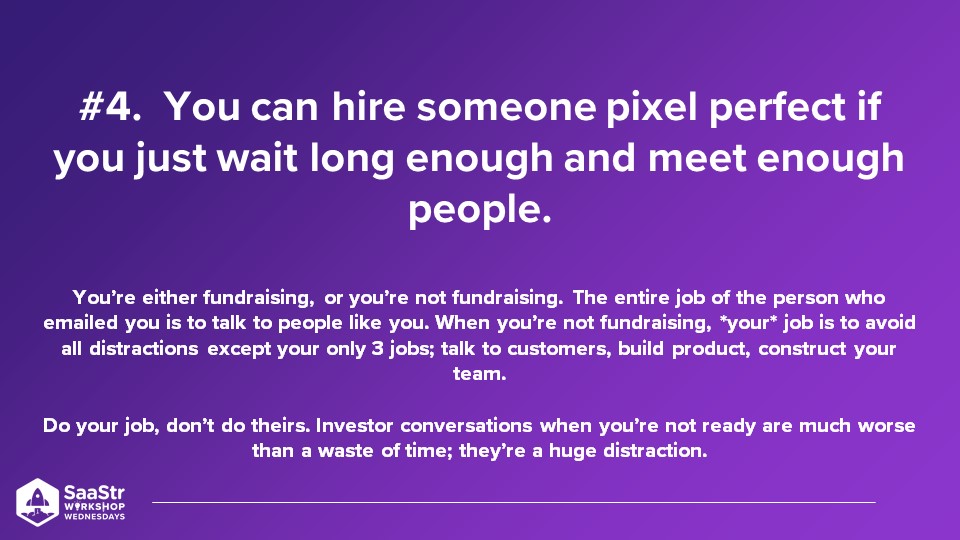
Misconception #5: We should invest to avoid tech debt that will cripple us later.
“Tech debt is a champagne problem that almost no startup gets the privilege to deal with. You are in the business of taking on debt of all sorts right now to build something so big that you can pay it down later,” Altman writes.
He also says he agrees with this misconception 80% of the time. There are a lot of nuances because some debts are so big you can’t repay them, even if you’re in a win condition.
The spirit behind this idea is that you’ll grow from 7 engineers now to 50 down the road who can deal with tech debt by taking on the debt in the early stages.
Unless the APR of a credit card is 90% and will, in fact, crush you later, swipe the cards. You’ll need all the help you can get to make it to a win condition.
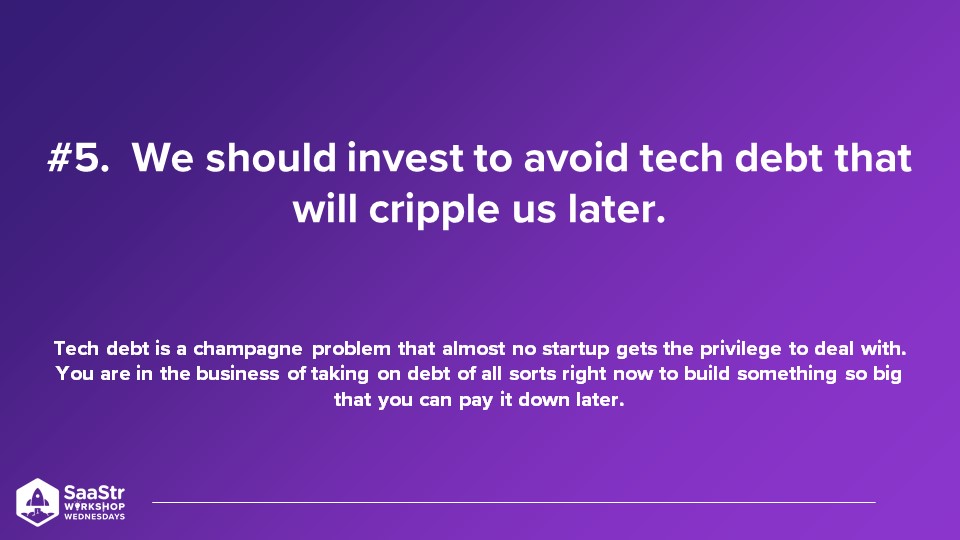
Misconception #6: Our big competitors are terrible.
Surprisingly or unsurprisingly, many people say things like, “This company has clunky products with unhappy customers.” When, in reality, the company they’re complaining about is actually feature-complete, and customers continue renewing despite frustrations because they solve a real business need.
All in all, respect your competitors.
For example, everyone seems to think Salesforce is terrible. The most successful SaaS company since the Middle Ages, which extracts an insane amount of money from users each month, seems like a rather good company, not a terrible one.
Let’s say your competitor is at $100M, and you’re at 10. They’re growing at 80%, and you’re growing at 100. It seems like you’re growing faster on a percentage basis, but in reality, they’re out-accelerating you.
So as a founder, be precise in how you think of relative growth and win rates. Are you winning most of the time, or only in a particular segment?
Get really clear about how you’re competing, what segments you’re in, and how the competitive win rate shakes out. The details are important.
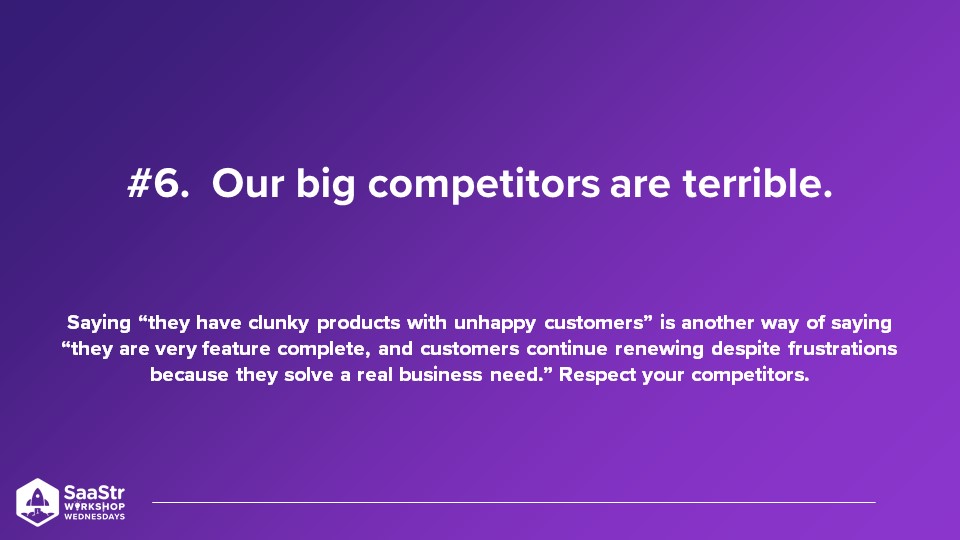
Misconception #7: I need coaching on being a great leader and advice on building strong processes and systems.
You don’t need coaching and stronger processes and systems until you’re big.
What you should do instead of believing this misconception is to block out all the noise that isn’t talking to customers.
Coaches are great, but only a few things matter early on: building products customers want, talking to customers, and assembling the right team.
You could do hundreds of things in a day; usually, the top 20 are really good. The top 10 are amazing, but you only have time for the top three.
So if you spend 11 hours a week thinking about being a better leader, that’s 11 fewer hours to focus on a couple of things that will make your company work or not.
Founders need to ruthlessly prioritize the things that give them a chance to succeed.
As for the processes and systems stuff, when does that matter?
Altman suggests the best time to upgrade your systems is when you have managers of managers.
If you’re just a founder and seven ICs, you don’t need to worry about it. Even if you have five managers and 30 employees, the overhead still isn’t worth it.
Once you get to about 80 people with a few true executives, you can shift your focus to improving processes and systems.
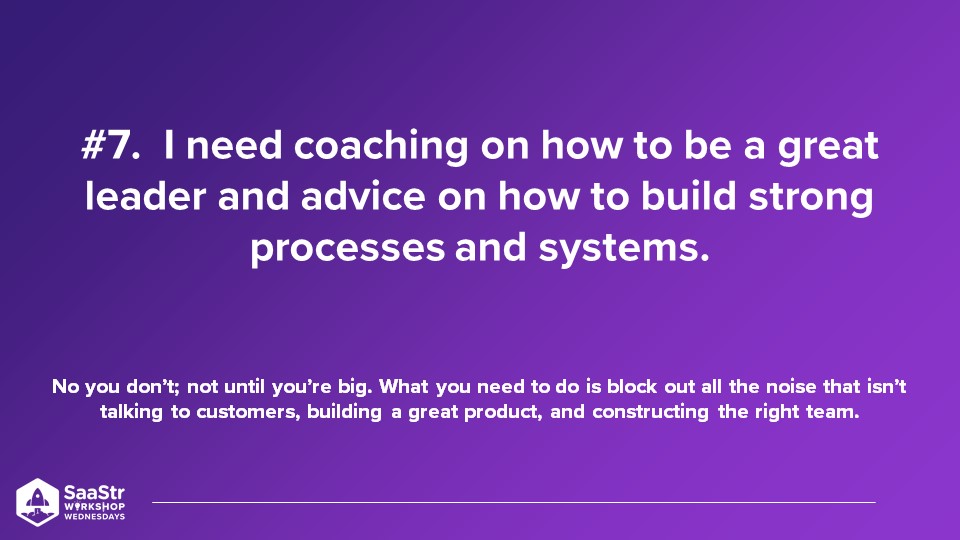
Misconception #8: Culture is created on day one. I need to spend the time here to be intentional upfront.
This sounds right, but it’s wrong. Your culture will naturally flow from how you do your only three jobs of building a great product, assembling the right team, and talking to customers.
The word “intentional” is a flag for early-stage founders and can be used as a flag at any stage.
There’s an allure to being a leader, showing up at conferences, and being in the press, but it’s a trick (and it’s not all that fun compared to genuinely delighting customers with your product).
Founders don’t need to establish their values as a tiny startup. It’s an unimportant use of time and not what makes culture.
What does form your company’s culture?
The average of the personalities of the first ten people at your startup. That will be the culture.
Of course, at scale, values matter and will guide how people make decisions, but there’s a place for it. When you’re small, that’s not it.
If you want to impact culture, hire the people you want to be around and build incredible things with. Anything more than that can detract from what you’re trying to achieve.
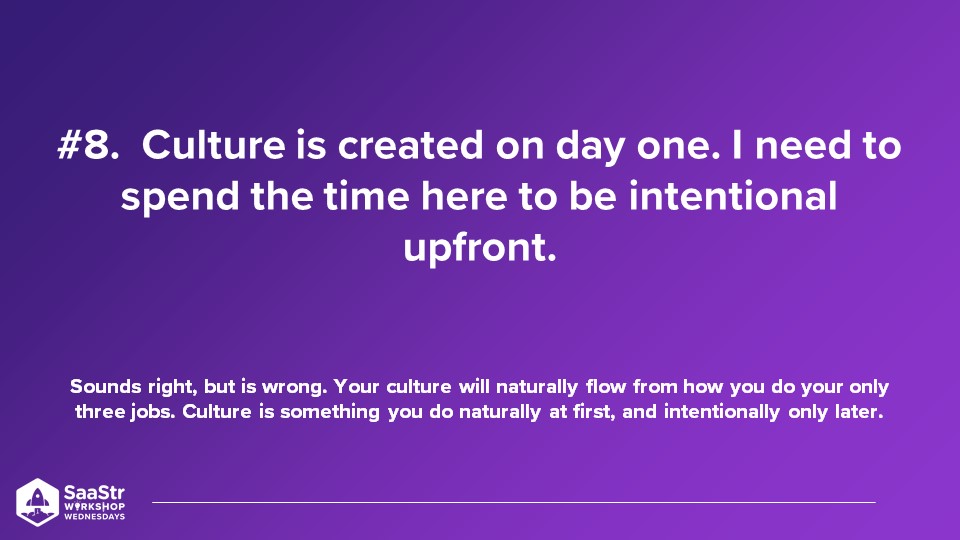
Bonus Insight: Going Multi-Product Early Can Work
Jack and Jason also did a deep dive on why Lattice went multi-product early, at just a few million in ARR. And why it worked:
The Takeaway
There are multiple winning paths for any startup, so each of these misconceptions is nuanced and doesn’t always apply to everyone. But generally, they do.
So here’s a quick recap of Lattice CEO’s key points for first-time founders:
- If you aren’t getting pull on your product, don’t blame it on a lack of features. One more mythical feature usually won’t solve the issue.
- One-time costs should count towards burn. Do a burn analysis every four months for a more realistic look at your numbers.
- When Fancy Firm X emails you to talk, it doesn’t mean they’re interested in investing in you. It means they’re doing their job of talking to everyone in their sector.
- Look for the diamond in the rough while hiring at early stages. You’ll never find that pixel-perfect person who satisfies every dimension of the job.
- Tech debt is part of growing a successful startup most of the time. Swipe those cards when it makes sense, and don’t try to pay down tech debt too soon. Wait until you’re big enough to handle it.
- Respect your competitors. Bad-mouthing them won’t ever benefit you.
- You don’t need coaching on being a better leader or stronger processes and systems until you’re big.
- Culture develops over time based on the first ten people you bring in. You don’t need to spend time here upfront.

